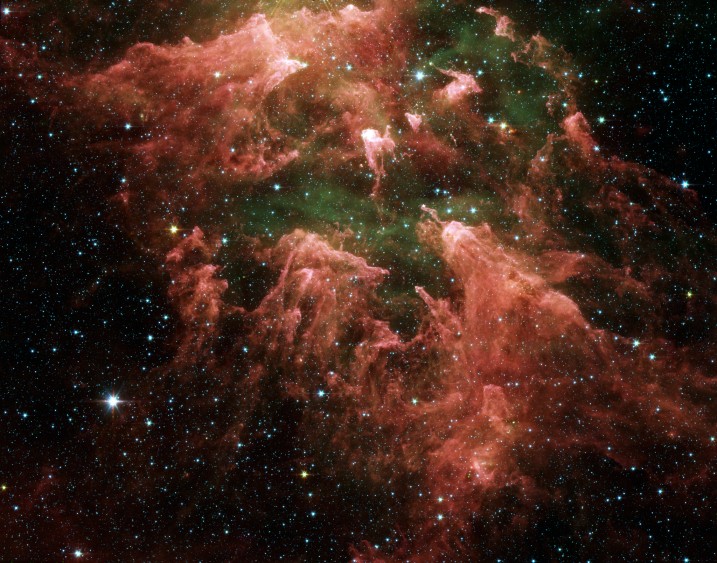
|
Explanation: Eta Carinae, one of the most massive and unstable stars in the Milky Way Galaxy, has a profound affect on its environment. Found in the the South Pillar region of the Carina Nebula, these fantastic pillars of glowing dust and gas with embedded newborn stars were sculpted by the intense wind and radiation from Eta Carinae and other massive stars. Glowing brightly in planet Earth's southern sky, the expansive Eta Carinae Nebula is a mere 10,000 light-years distant. Still, this remarkable cosmic vista is largely obscured by nebular dust and only revealed here in penetrating infrared light by the Spitzer Space Telescope. Eta Carinae itself is off the top left of the false-color image, with the bright-tipped dust pillars pointing suggestively toward the massive star's position. The Spitzer image spans almost 200 light-years at the distance of Eta Carinae.
|
January February March April May June July August September October November December |
| ||||||||||||||||||||||||||||||||||||||||||||||||
NASA Web Site Statements, Warnings, and Disclaimers
NASA Official: Jay Norris. Specific rights apply.
A service of: LHEA at NASA / GSFC
& Michigan Tech. U.
Based on Astronomy Picture
Of the Day
Publications with keywords: Eta Carinae - nebula - infrared - Spitzer space telescope - star formation - dust
Publications with words: Eta Carinae - nebula - infrared - Spitzer space telescope - star formation - dust
See also:
- APOD: 2025 August 28 Á Galaxies, Stars, and Dust
- APOD: 2025 July 10 Á Lynds Dark Nebula 1251
- APOD: 2025 June 23 Á W5: Pillars of Star Formation
- APOD: 2025 April 28 Á Gum 37 and the Southern Tadpoles
- APOD: 2025 March 26 Á Star Formation in the Pacman Nebula
- APOD: 2025 March 18 Á LDN 1235: The Shark Nebula
- APOD: 2025 February 23 Á Saturn in Infrared from Cassini
